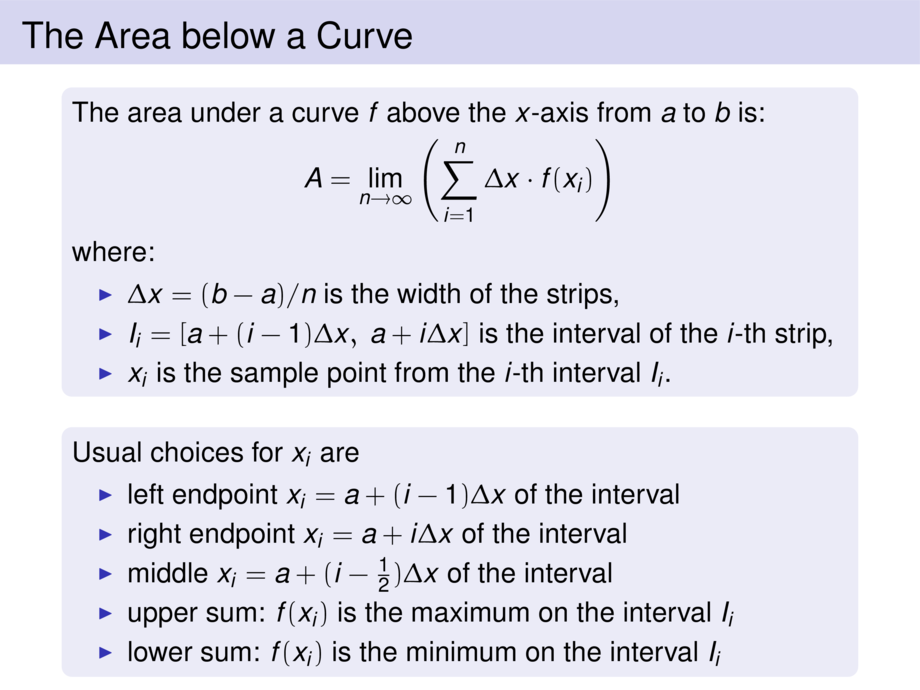



































































































97/98
\begin{frame}
\frametitle{The Area below a Curve}
\begin{block}{}
The area under a curve $f$ above the $x$-axis from $a$ to $b$ is:
\begin{talign}
A = \lim_{n\to \infty} \left( \sum_{i = 1}^n \Delta x\cdot f(x_i) \right)
\end{talign}
where:
\begin{itemize}
\item $\Delta x = (b-a)/n$ is the width of the strips,
\item $I_i = [a + (i-1)\Delta x,\;a+ i\Delta x]$ is the interval of the $i$-th strip,
\item $x_i$ is the sample point from the $i$-th interval $I_i$.
\end{itemize}
\end{block}
\pause
\medskip
\begin{block}{}
Usual choices for $x_i$ are
\begin{itemize}
\pause
\item left endpoint $x_i = a + (i-1)\Delta x$ of the interval
\pause
\item right endpoint $x_i = a + i\Delta x$ of the interval
\pause
\item middle $x_i = a + (i-\frac{1}{2})\Delta x$ of the interval
\pause
\item upper sum: $f(x_i)$ is the maximum on the interval $I_i$
\pause
\item lower sum: $f(x_i)$ is the minimum on the interval $I_i$
\end{itemize}
\end{block}
\end{frame}

